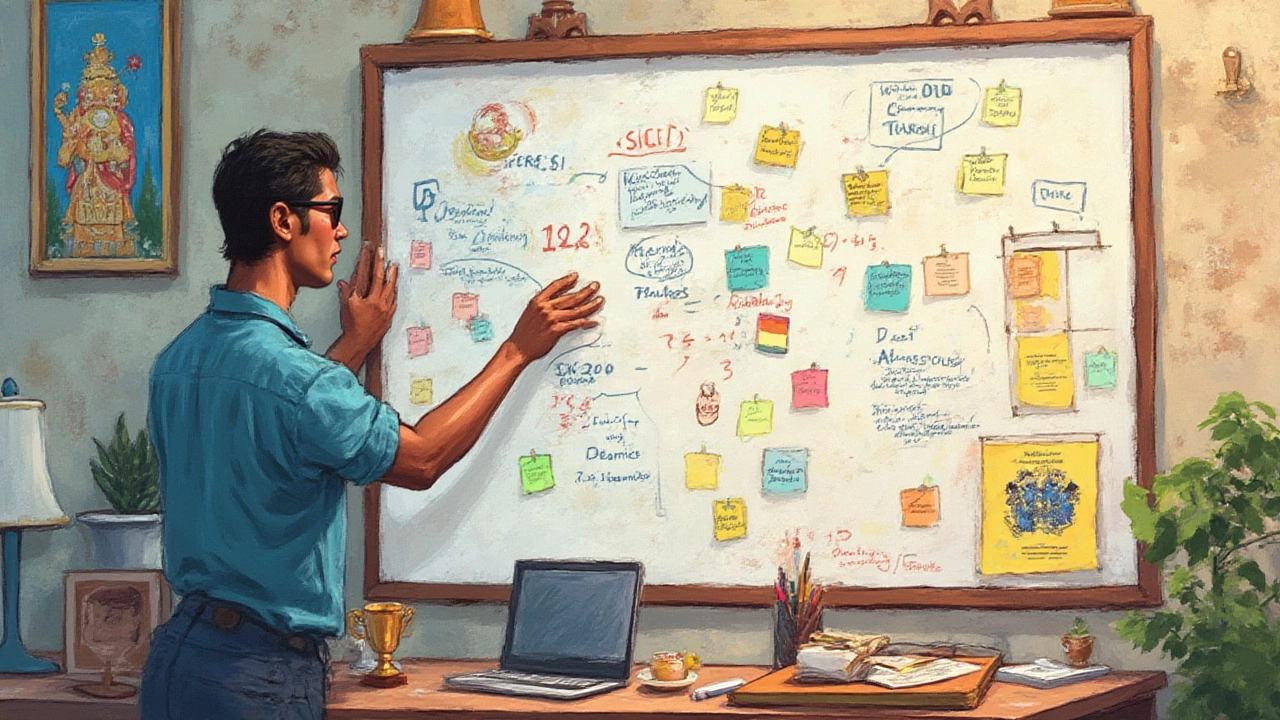
Think back to 2012. Udemy launches its first viral course, and the guy behind it—Rob Percival, a math teacher—pockets a million bucks within a year. Fast forward to today, and eLearning isn’t some nerdy side gig. It’s a $400 billion industry, with experts and everyday people teaching what they know, sometimes turning obsessions into booming businesses. You don’t need a PhD or a fancy studio. People pay for expertise, step-by-step knowledge, or something as niche as learning to juggle while doing yoga. If you have skills or stories worth sharing, there’s cash on the table. But how do you stand out, and what’s the smartest route to turn digital lessons into real income?
Paths to Monetizing Your Knowledge
Everyone thinks they need a viral video or a bestselling course to earn from eLearning, but that’s not quite the reality. The digital education game is broad. Start with what comes naturally—maybe you tutor kids in math, walk dogs for neighbors, even bake bread that makes everyone jealous. The trick is translating those skills into sold lessons. The main routes people use are:
- Self-hosted courses: Set up your own website with tools like Teachable, Kajabi, or Thinkific, keep the branding, and control the prices.
- List on big marketplaces: Platforms like Udemy or Coursera have traffic but take a chunk of your sales—sometimes over 50%.
- Membership communities: Build a paid group (Patreon, Discord, even Facebook Groups) where fans pay for ongoing lessons and community perks.
- Coaching and webinars: Offer live classes, 1:1 coaching, or group sessions, letting you charge premium rates.
- Digital downloads: Think eBooks, cheat sheets, templates—products that supplement your main lessons and sell on autopilot.
Everyone loves passive income, right? The truth: making money while you sleep works best if you’ve already put in the work building out great content and attracting people to it. Selling a little $19 eBook or $150 course doesn’t sound explosive, but done at scale, it adds up.
Here’s a secret: people will pay more for outcomes than for hours of video. That’s why a 3-hour crash course with strong results can sell for more than a 30-hour snoozer. Think "I will help you land your first Web Developer job in 6 weeks," not just "Learn JavaScript from scratch." If you position your course as a shortcut to solving a real problem, you can charge more — and people won’t blink.
Another path that’s taken off in 2024 is the cohort-based model. Instead of a solo, on-demand course, you run a small group through your content together with weekly live calls. Because people crave support and accountability, you can command prices of $500 or more per person, even if your audience is small.
| Monetization Model | Typical Earnings per Student | Effort/Setup |
|---|---|---|
| Self-Hosted Video Course | $50 - $500 | High (setup, marketing) |
| Marketplace Course (Udemy, Coursera) | $10 - $200 | Medium (low control on sales) |
| Live Cohort Course | $200 - $2,000 | High (live sessions, support needed) |
| Digital Downloads | $5 - $99 | Low (after creation) |
| Membership | $10 - $100/month | Ongoing (community) |
Before you rush to start filming or typing up lesson plans, here are a few questions worth answering:
- Who’s your audience, really? (The more specific, the better. "Accountants who just switched to remote work" beats "anyone interested in Excel.")
- What problem are you solving for them? Is it urgent, painful, or lucrative?
- Do similar courses exist? If yes, can you make yours fresher, easier, or more outcome-driven?
It sounds simple, but in reality, people who do well don’t just teach—they get inside their students' heads. They answer questions before they’re asked, use stories, and skip the jargon. That’s why, even though there are thousands of Photoshop courses, the ones that promise "better Instagram posts in one hour" outsell generic ones.

Building Engaging Content That Sells
If there’s one thing the pros know, it’s this: content quality trumps everything. You don’t need a Hollywood budget, but sloppy webcam videos and endless slides send people running. What’s better? Fast, clear lessons. Use your phone camera (modern phones look great), get some natural daylight, and check your audio—content with clear sound beats fancy visuals. People can forgive grainy video, but nobody tolerates a mumble. Grab a $40 USB microphone—trust me, it’s worth it.
Structuring your material is another underestimated superpower. Try breaking content into "module – lesson – actionable step". For every 5-10 minutes of video, include a quick exercise or resource. Not only does this keep things lively, but science backs it up too. The 2023 LinkedIn Learning User Study found retention is 41% higher when students are kept active with exercises, quizzes, or challenges after each lesson.
Watch any top-selling course or major eLearning creator, and you’ll spot a few trends:
- Lessons are short, focused, and titled around outcomes (“Get your first sale using Instagram Stories”) rather than dry theory.
- Visuals are simple but punchy—think bold slides, annotated screenshares, or drawing on an iPad.
- Real-life examples ("Here's how I grew this side hustle from $0 to $1000/month") beat textbook overviews every time.
- Each video ends with a clear call to action: try this task, join the group, download this cheat sheet.
Here’s where it gets interesting—make money on elearning often hinges on community, not just content. People show up for your lessons but stick around for the support group, direct feedback, or the chance to network. Consider adding: live Q&As, a private forum or Slack, or even simple comment threads where you jump in and help. Even in huge platforms like Skillshare, classes with some kind of community aspect get 23% more enrollments, according to their 2024 Instructor Trends Report.
There’s also a massive market for bite-size content—micro courses under 30 minutes, sold for $10 or less. These do especially well on mobile-first platforms and via email newsletters. If you can break a big topic down into several quick wins (“3 ways to close your first freelance gig,” “The fastest way to read a balance sheet”), you’ll attract busy learners who aren’t ready for a 10-week bootcamp.
And a big tip—offer something free to hook people in. A mini-course, a sample lesson, or a downloadable cheat sheet lets potential students test your style before clicking ‘buy.’ Leadpages published data showing that creators who offer a free asset as a lead magnet collect 5x more emails, letting them sell higher-ticket courses later.

Scaling and Marketing Your eLearning Hustle
Building a fantastic course is just half the battle. If you don’t get attention, no one buys. Here’s the dirty secret: most creators spend as much time (or more) on promotion as they do on making content. But don’t freak. Smart moves, not spam, win in this world.
First, organic traffic still rules. Whether you’re on YouTube, running a blog, or just active on LinkedIn, drop real value and your name gets around. Start by sharing previews, “how I did it” stories, or quick wins from your course. If you help solve problems before you pitch, people will want more.
- Growing an email list is non-negotiable. Offer a free mini-course or workbook and ask for names and emails. Later, you nurture those folks with tips before mentioning your paid programs.
- Mini-webinars or live workshops let you teach a concept, build trust, and then smoothly sell the full course. Some creators convert 7-10% of webinar viewers directly into buyers—that’s huge.
- Don’t ignore guest podcasts, Medium articles, or even niche forums. Go where your audience hangs out and show up as the expert who helps, not just the coach who wants cash.
- Testimonials and student success stories are rocket fuel. Ask early buyers for their wins and use those in your sales pitches. According to the 2024 Social Proof in eCommerce Survey, purchase rates jump 26% when buyer stories are included.
Paid ads work—if you can spend wisely. Start with retargeting: show ads only to folks who already visited your site or signed up for something free. Don’t blast cold strangers; it’s a money pit for beginners. Most successful creators make their first $10,000 without splurging on Facebook or Google ads. Once you know your lifetime customer value ($ per buyer x expected repurchases), then test small campaigns on a tight budget.
There’s also licensing and B2B deals. If your content solves business pain points (like onboarding, leadership, sales training), pitch companies or consulting groups. Businesses often pay 10x more per seat than individuals. In 2025, about 40% of L&D budgets went to outside courses or ready-made trainings, so it’s a wide-open door if you niche down.
Finally, reinvest profits. Upgrade your production, offer add-on coaching, bundle related courses, or launch a community. Stack small wins into systems—those who stick with it see their income snowball year over year.
eLearning can work for anyone who’s willing to share what they know, be real with students, and try new things. You don’t have to be a technical wizard or social media star. You just need the guts to start, the patience to improve, and a bit of hustle. Your knowledge is worth more than you think—now’s the best time to teach it and start earning for yourself.
